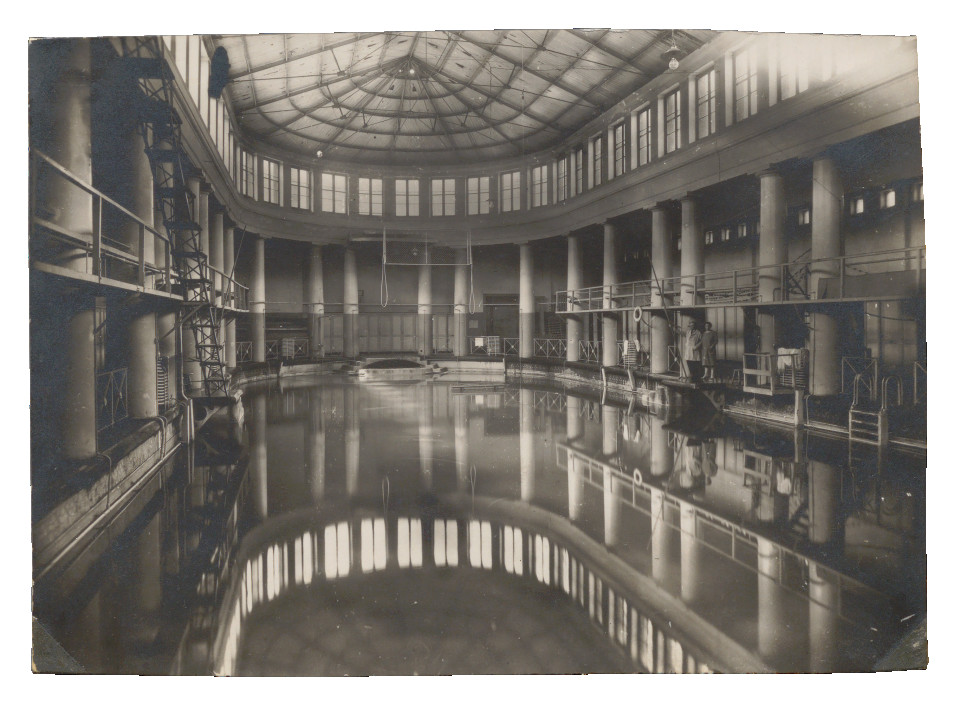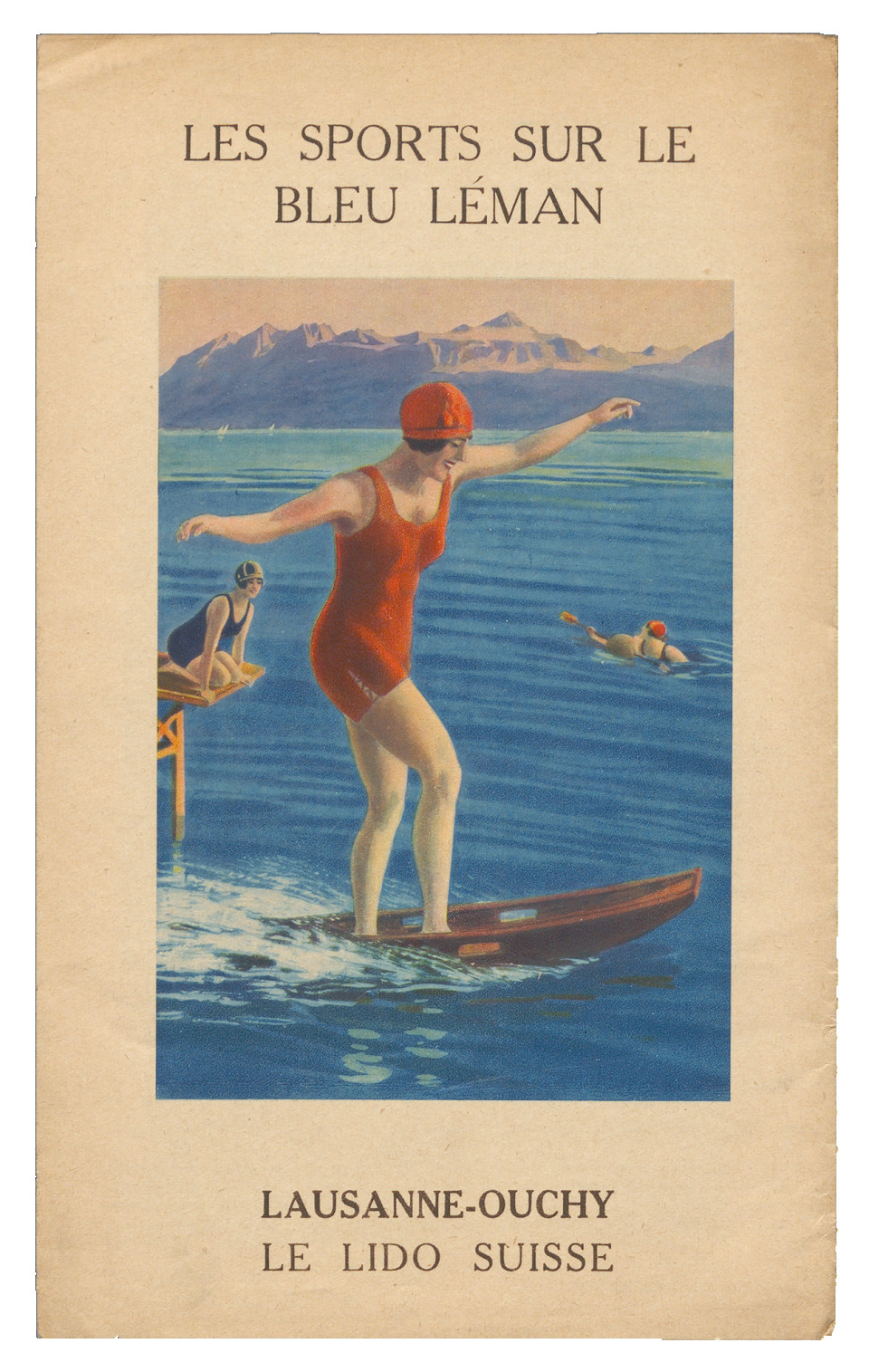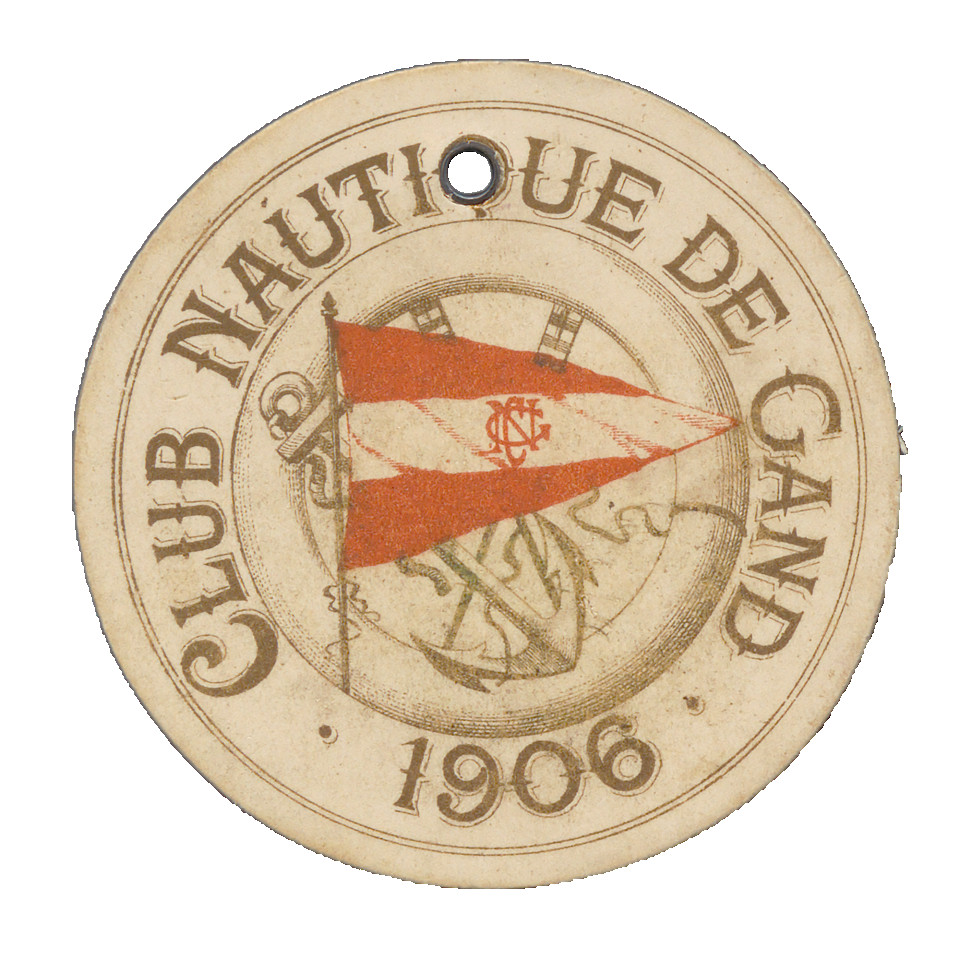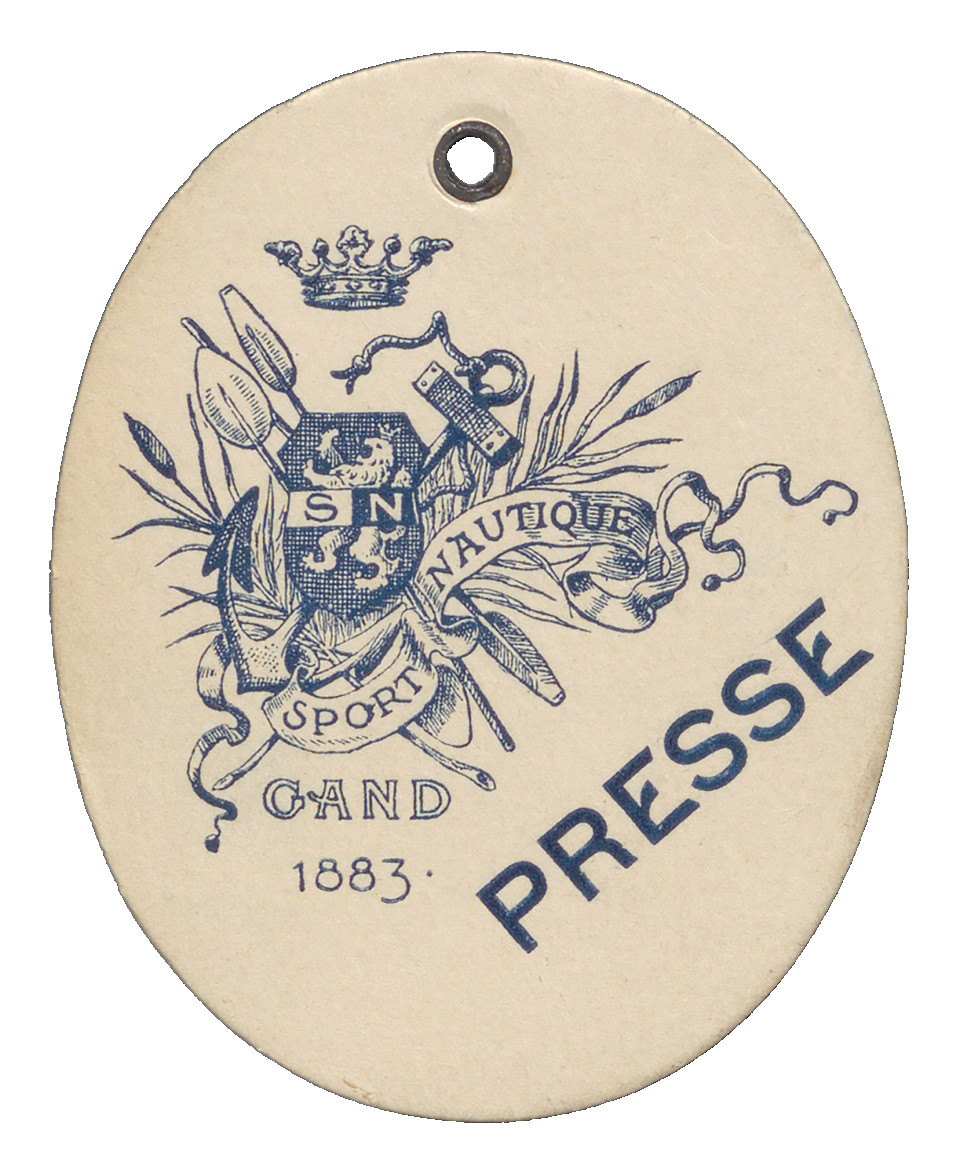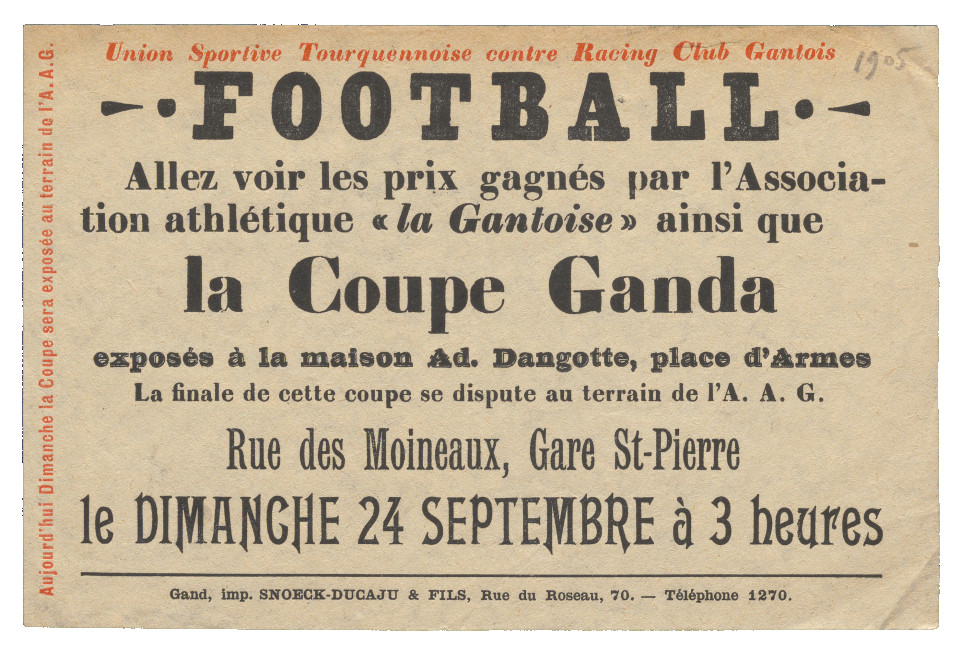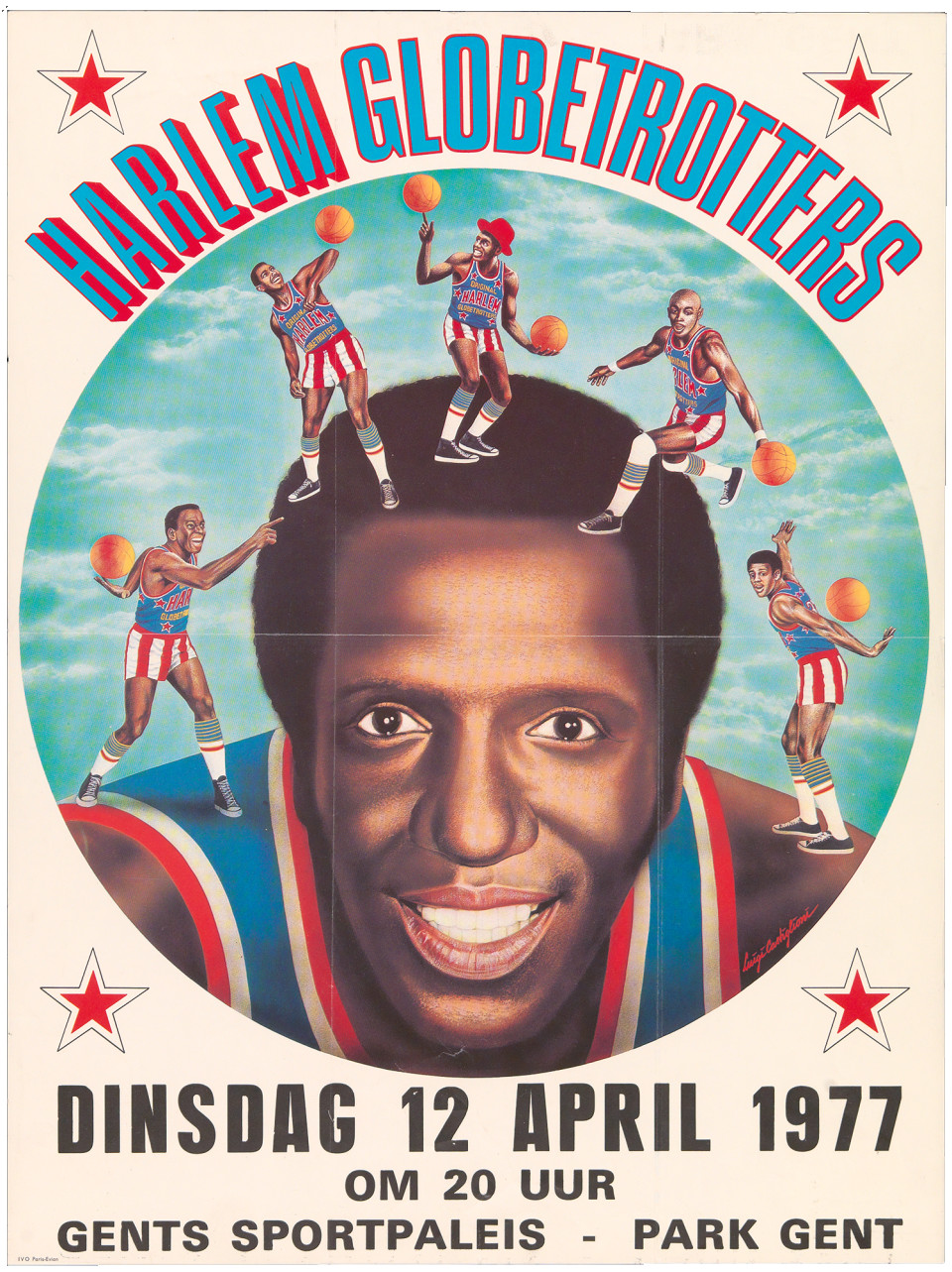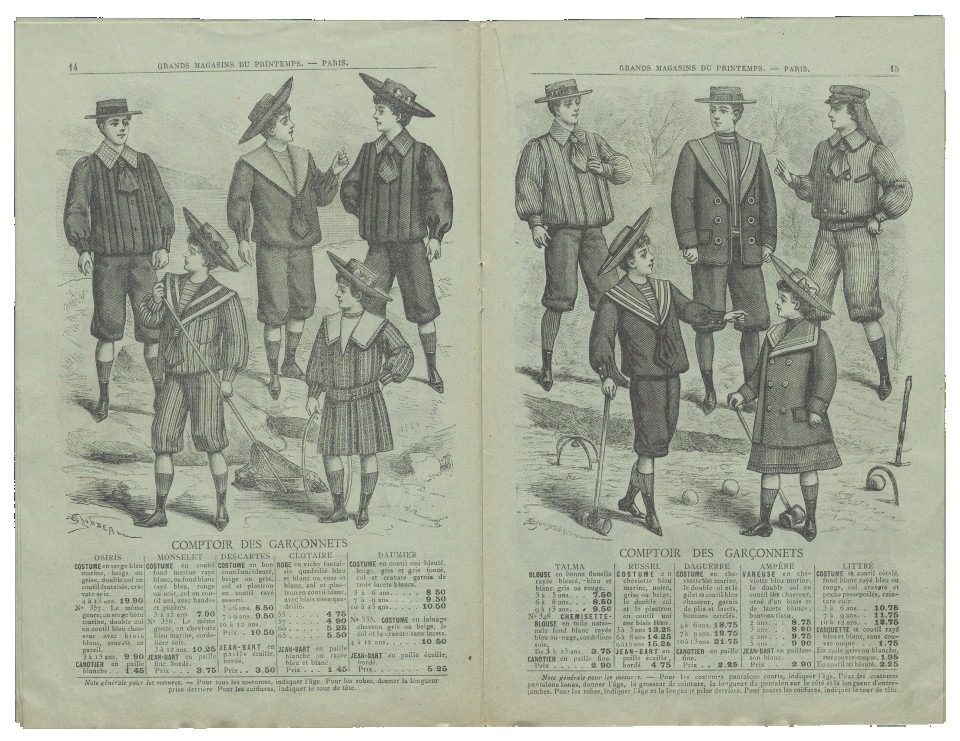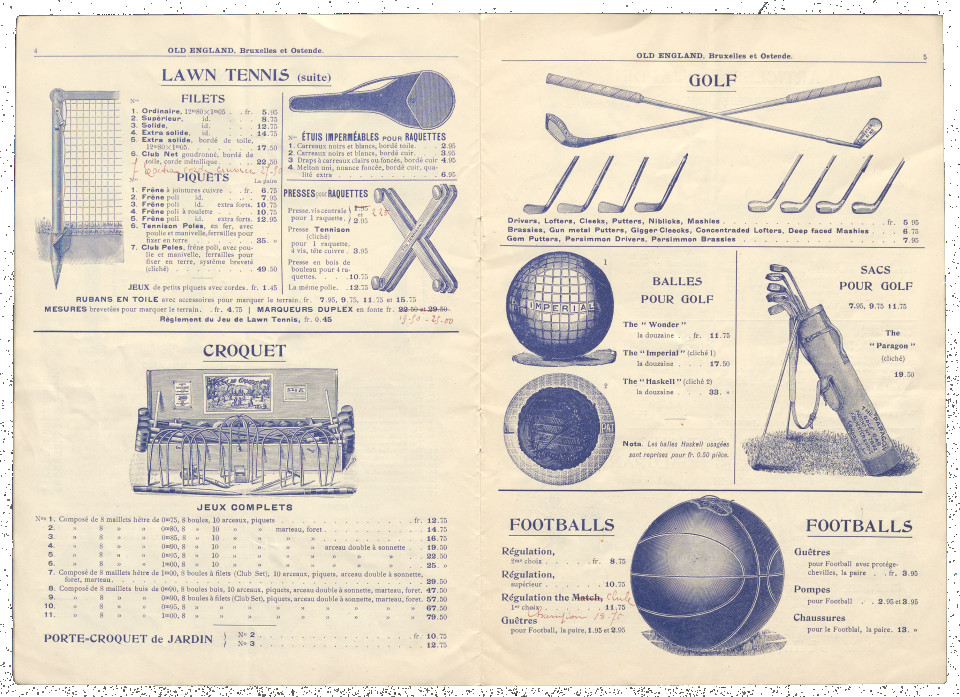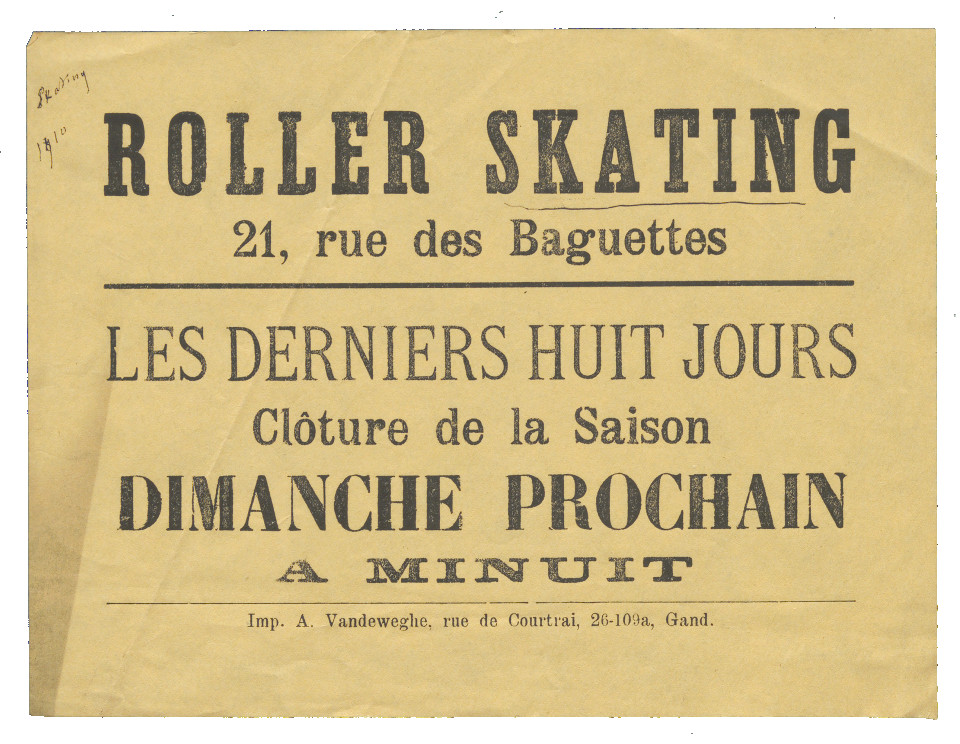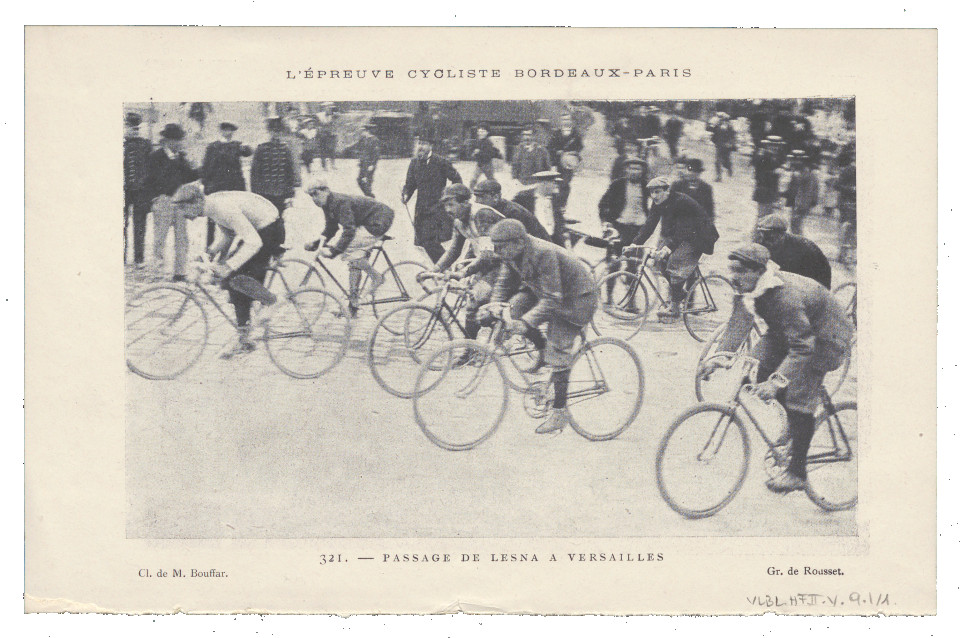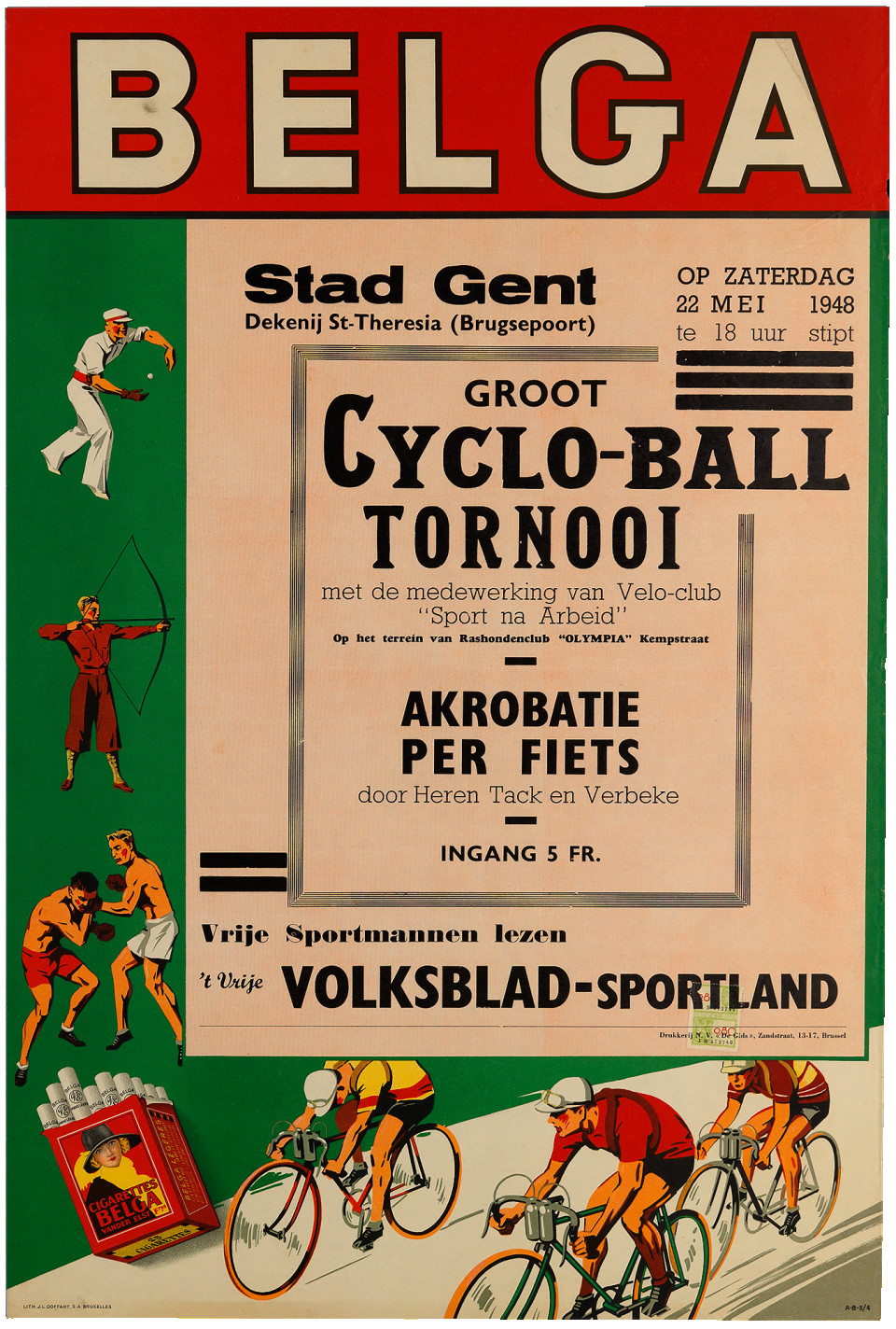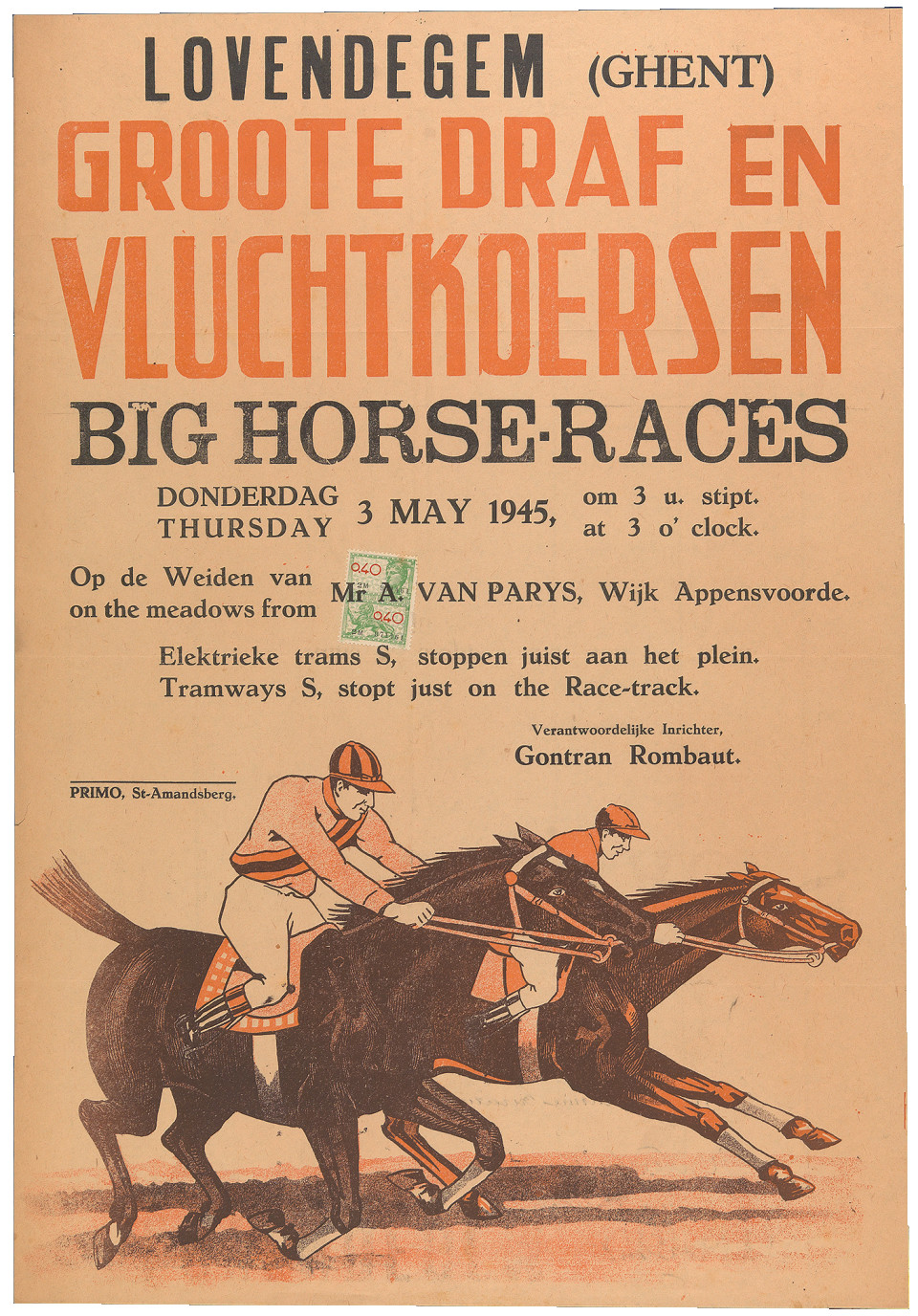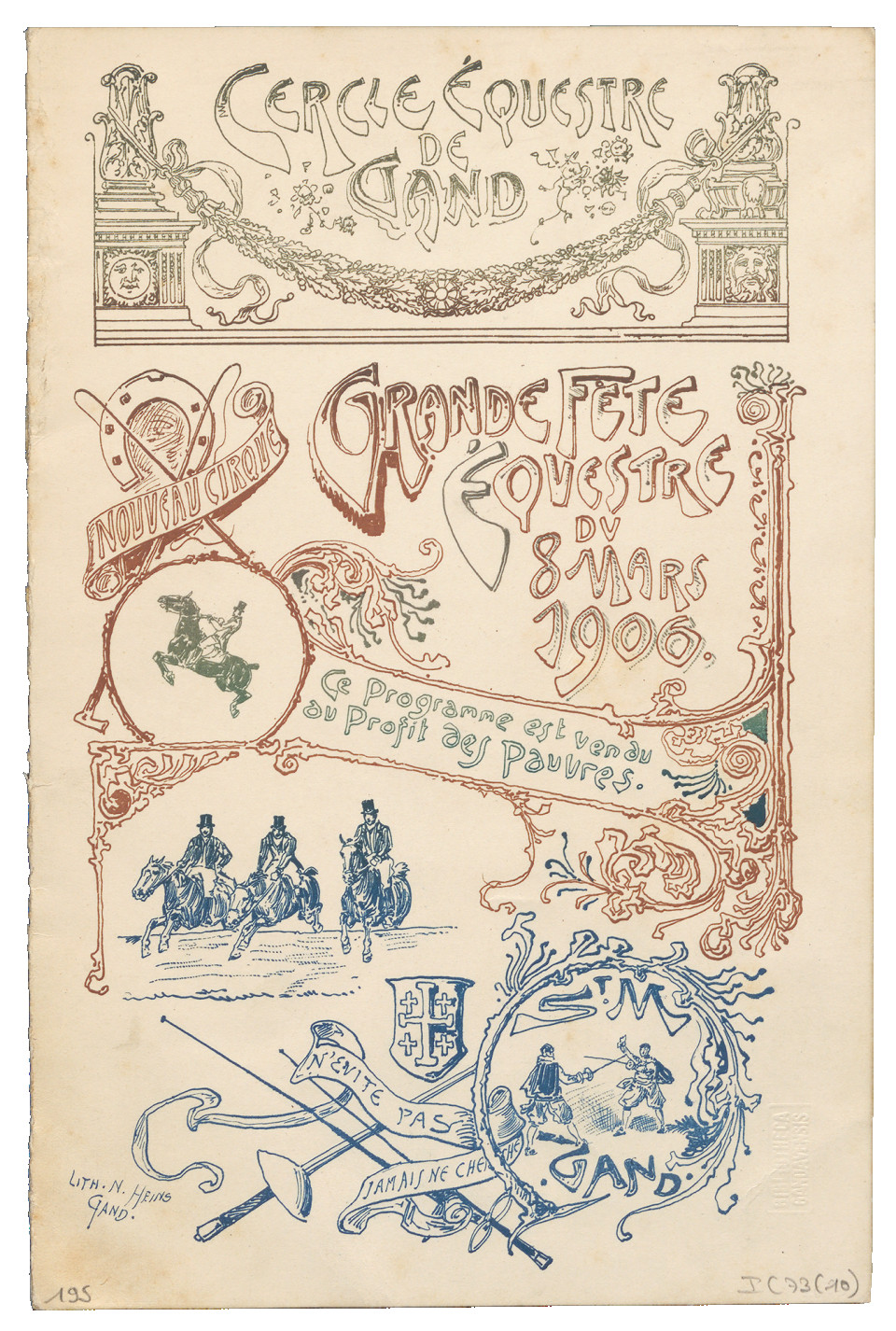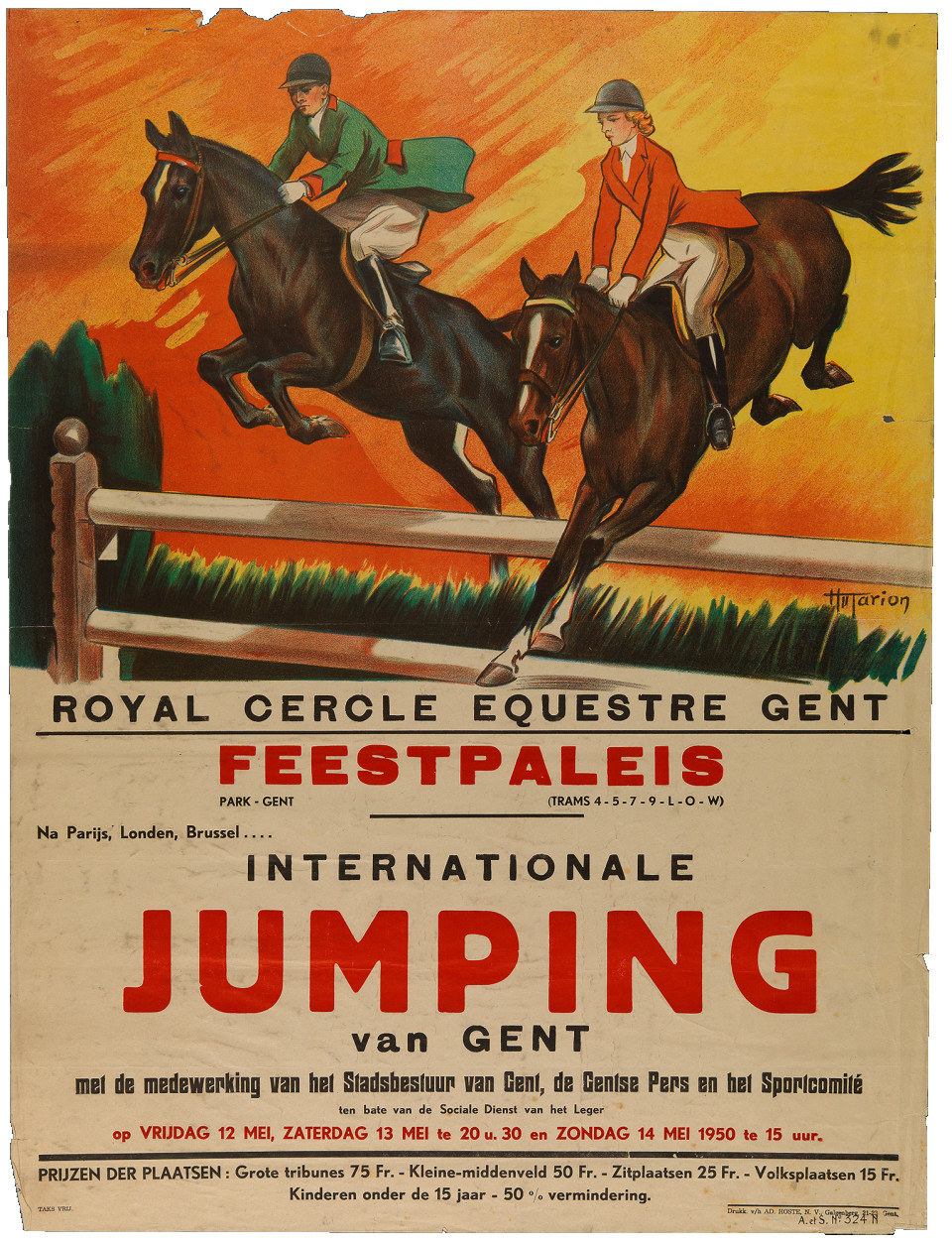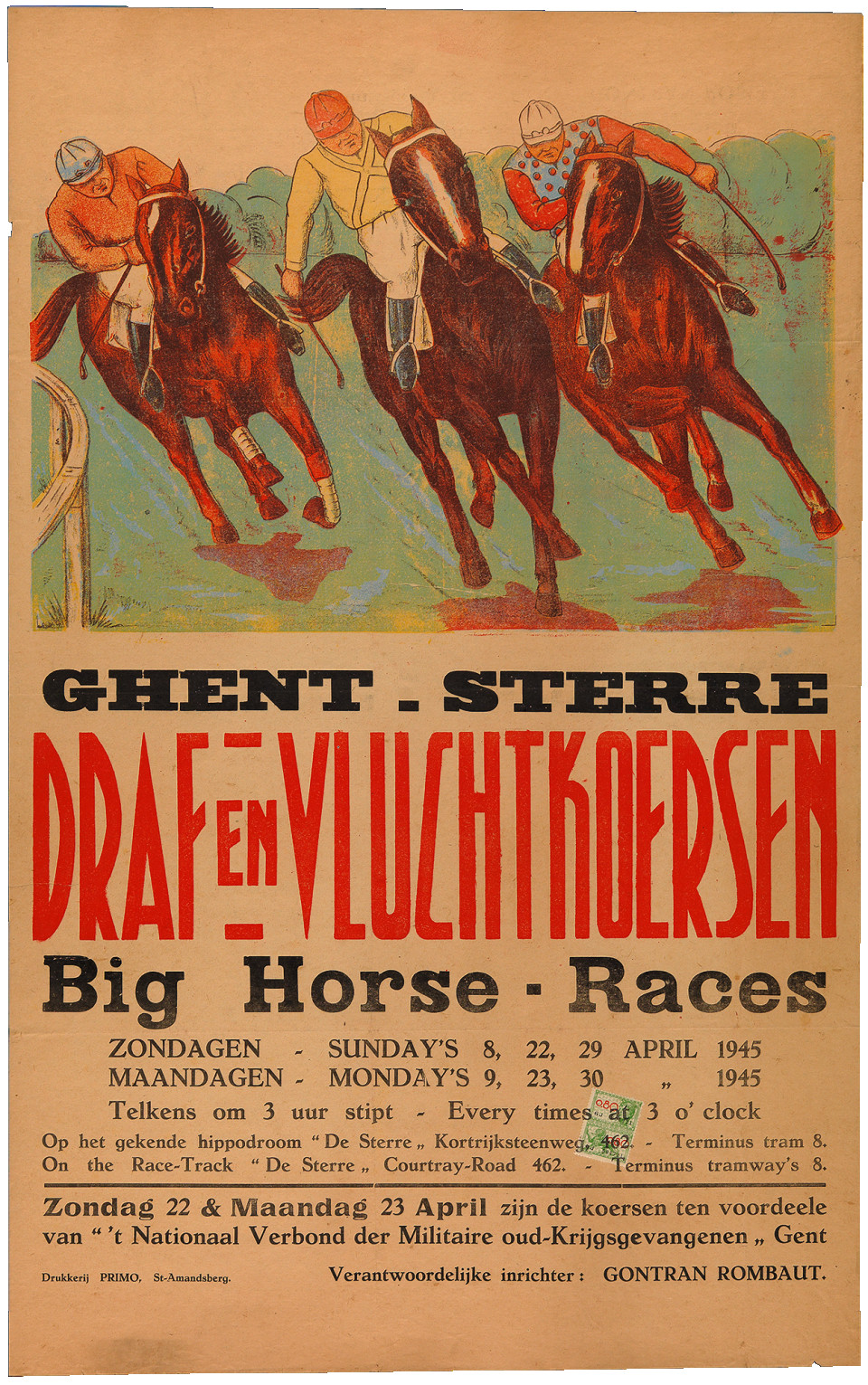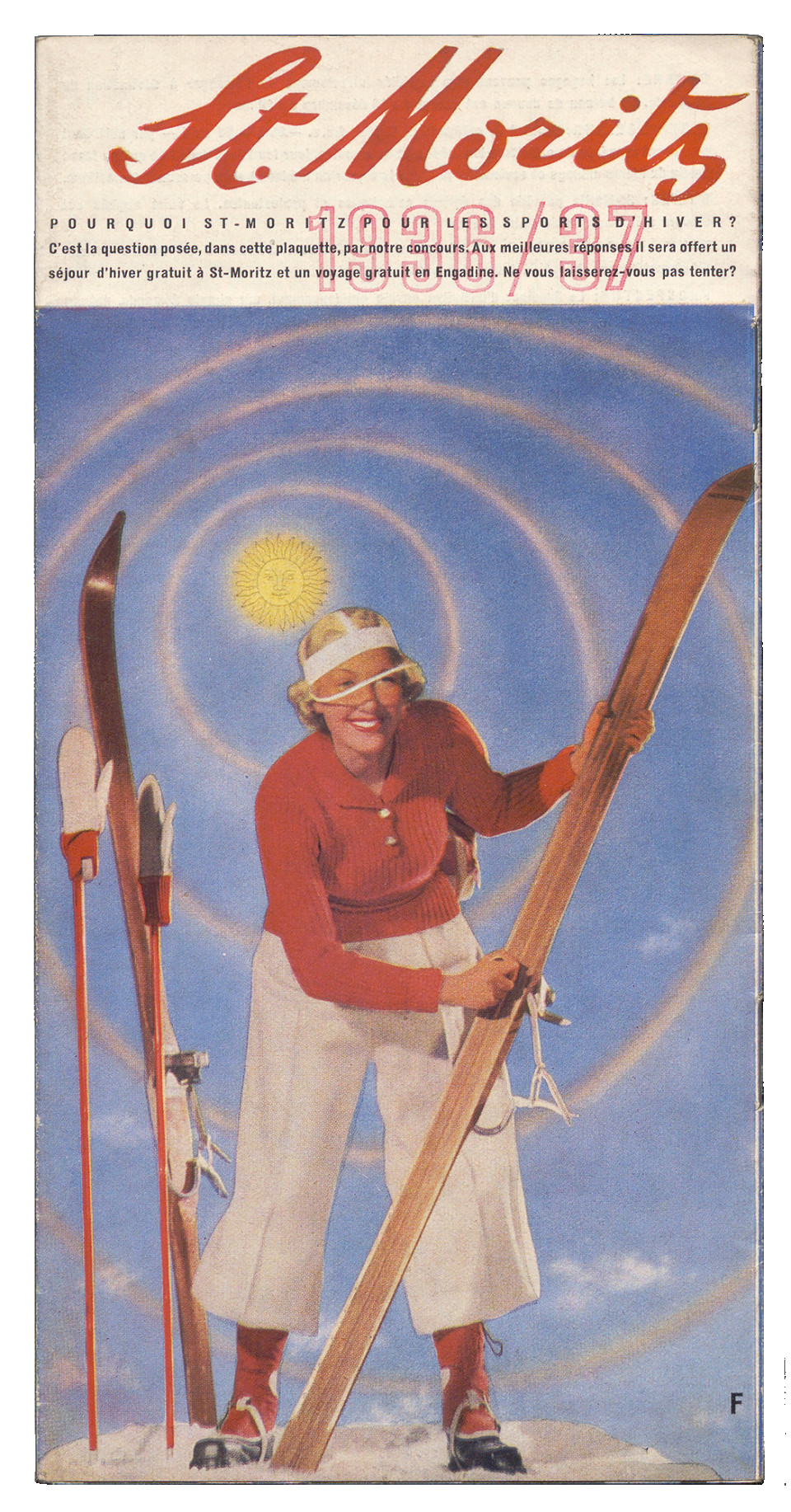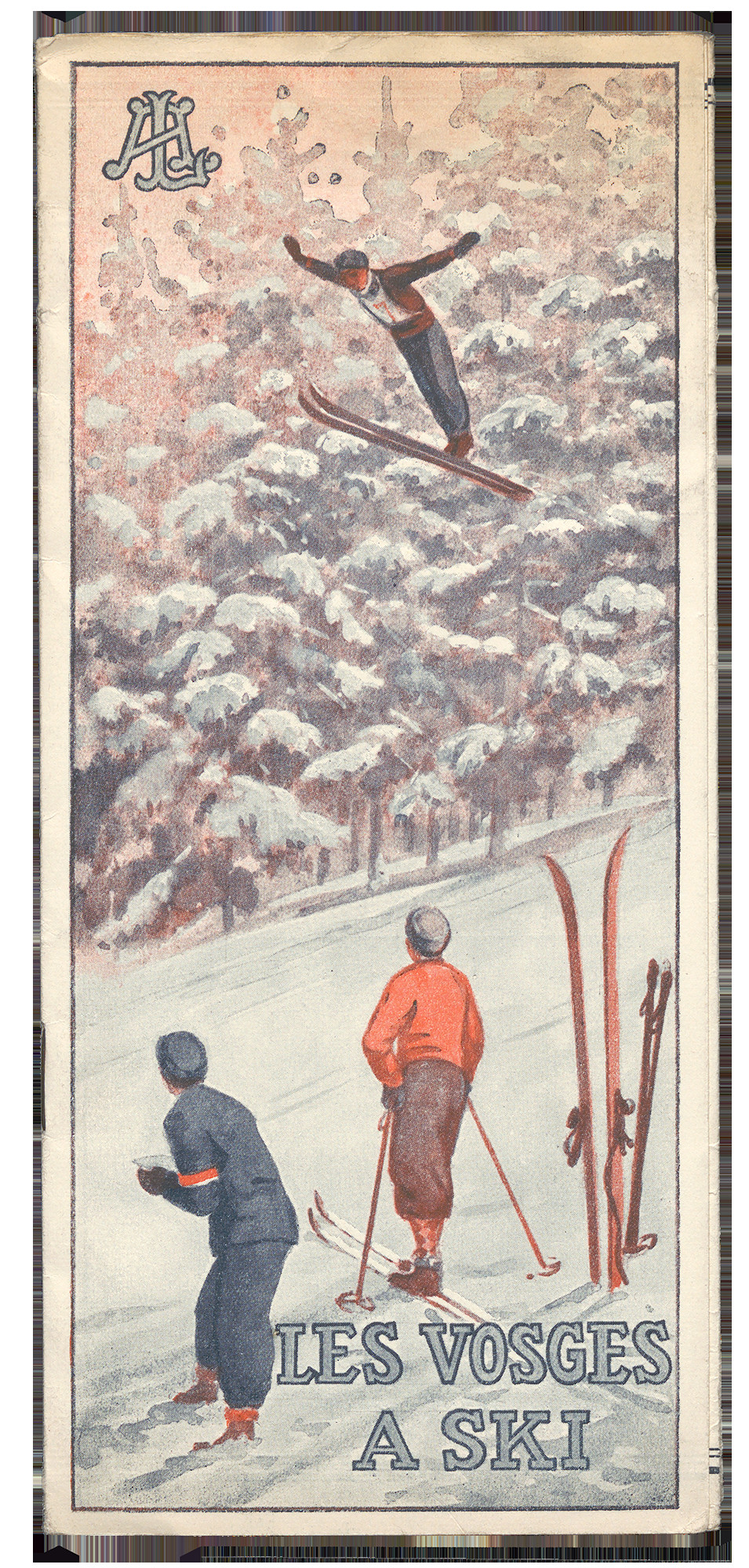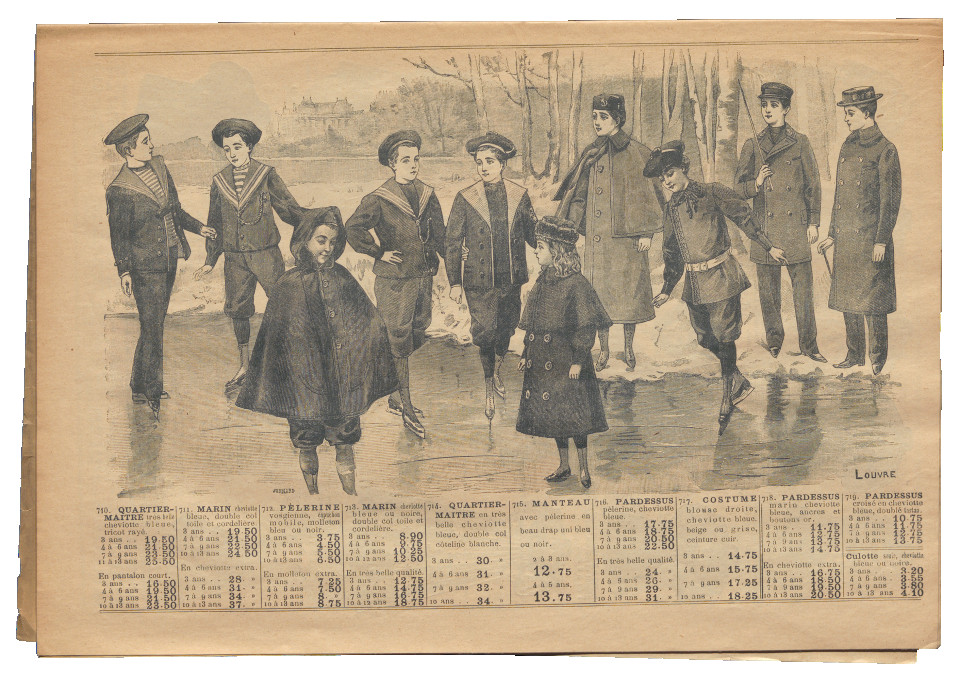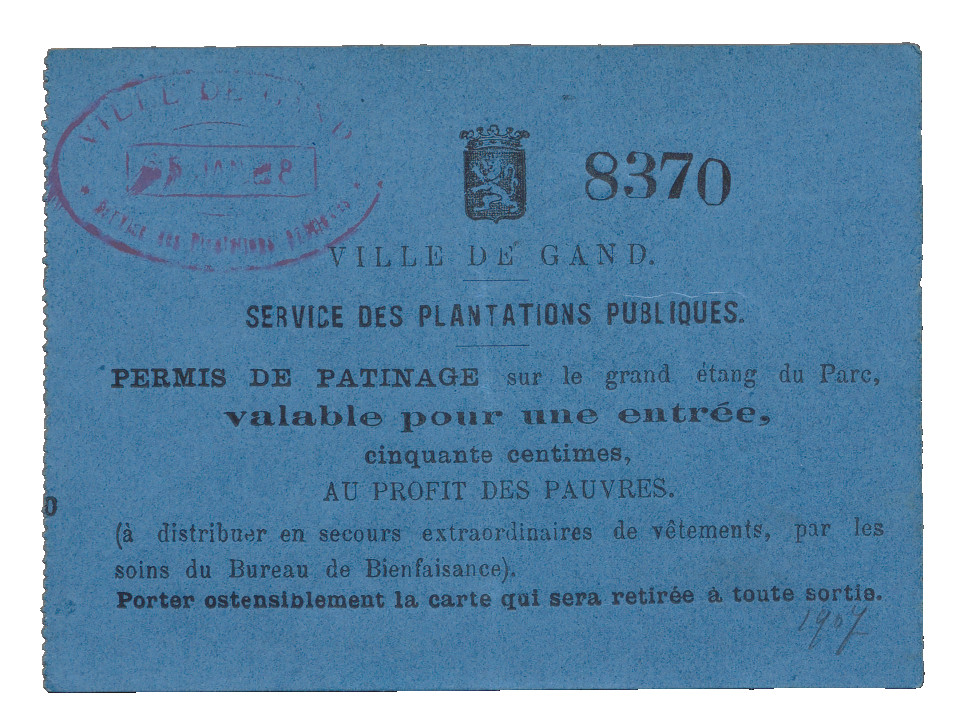Ghent sports history in the Boekentoren collection
Heritage Day 2025 on Sunday 27 April, was centered around sports and games. We made a selection from our various heritage collections documenting Ghent's multifaceted sports history.
The Gandavensia collection is a rich source. It consists of works printed in Ghent, written by Gentenaars, dealing with Ghent or connected with the city.
The origins of this collection lie in the dedication of former head librarian Ferdinand vander Haeghen. He collected around ten thousand Ghent prints for his ‘Bibliographie Gantoise’ in the 1850s and 1860s.
But the ‘Vliegende Bladen’ collection also offers a unique insight into Ghent's sports history. Here, too, Ferdinand vander Haeghen is at the source of this ephemeral collection.
In addition, the museum's vast collection of prints, porcelain cards, glass plates, coins and medals, photographs, posters and more was browsed. Ghent's sports history runs throughout the collection.
Archers' guilds: from defence to stylish competition
Archers' guilds (schutterij) originated in an urban context of the Middle Ages. As a result of urban growth and independence, there was a greater focus on defence. Thus, around 1300, the first militia guilds emerged. They were essential for defending and maintaining order in the city. But they also played an important social role. Their colourful presence at all major festivals contributed to the city's atmosphere.
The societies gradually lost their urban-military importance and the focus shifted to sporting and cultural content. Even today, several archers' guilds are still active in Ghent, each with their weapon: the crossbow, handbow, firearm or fencing.
Ghent - home of watersports
With its many waterways, it should come as no surprise that water sports are popular in Ghent.
At the beginning of the 19th century, stretches of fenced-off bathing water emerged, where people could swim in a ‘clean way’. In addition to relaxing and cooling off in the water, swimming lessons also emerged.
To meet the rising demand for clean water and winter swimming, Ghent's first indoor swimming pool was opened in 1886: the Van Eyck swimming pool.
There was also the sport of rowing, which flourished in Ghent with the establishment of the Royal Rowing Club Ghent (KRCG - 1871). The legendary May regatta on the Ghent-Terneuzen canal drew crowds of spectators. Victory in the ‘Grand Challenge Cup of Henley’ on the Thames in 1906 and in 1909, earned the club royal plaudits. In 1961, the club moved to the new Watersportbaan, where it still has its home port.
Water sports and swimming have always been popular in Ghent.
Ball sport and Buffaloes
Ghent's sporting veins extended beyond swimming and rowing. The Royal Athletics Association of Ghent (KAA Ghent), which grew out of the ‘Association Athlétique La Gantoise’, bears witness to a rich sports history. Originally focused on gymnastics and athletics, the association steadily expanded its activities to a wide range of sports, including cycling, football, cricket, fencing, hockey, swimming, water polo and tennis.
The football section, founded in 1900 has been known as the ‘Buffaloes’ since the 1920s. It undoubtedly forms the most iconic part of KAA Gent.
Ball sports like football, hockey and tennis have a long tradition in Ghent.
On wheels
Everyone knows the Ghent Kuipke, the winter velodrome in the middle of the Citadel Park. It opened in 1922 with the Six-Day Race and was built for the 1913 World Fair. But the Kuipke was not the first cycling track in Ghent. As early as 1892, organised cycling races were held on an open-air track on Godshuizenlaan. Unfortunately, this track disappeared in 1901 when the Albertlaan was constructed.
Besides cycling, roller skating also enjoyed remarkable popularity in Ghent. Leaflets from the collection testify to a veritable craze at the end of the 19th century. The ‘Salle du Skating Rink’ in Bagattenstraat was the meeting place where you could enjoy a lively party in addition to roller-skating and cycling.
Besides cycling, roller skating was also very popular at the turn of the century.
Gymnastics, athletics and indoor sports
The documents in the ‘Flying Sheets’ collection reveal a remarkable popularity of gymnastics clubs, each with its own unique motto.
The Société Gantoise de Gymnastique, founded in 1863 with the motto ‘Have confidence in yourselves’, was one of the pioneers. The liberal Gymnastic People's Society (1871) with ‘Work is never lost’ and the Club Gymnastique (1874) with ‘A chacun son droit’ soon followed.
Athletics also had a heyday. The most famous club was KAA Gent, whose history parallels that of the football club KAA Gent.
At the beginning of the 20th century, boxing and wrestling gained in popularity, with camps held in famous venues such as the Minard Theatre, the New Circus and the Palais du Skating-Ring.
Gymnastics, athletics and boxing gained popularity in the early 20th century.
Equestrian
In the Lange Violettenstraat in Ghent one can still find the Arena Van Vletingen, today a sports hall, but originally built as a riding school for the cavalry of the Krijgsbezetting. The building was built to the design of Ghent city architect Louis Roelandt.
The Cercle Equestre Gantois further promoted equestrian sports. They commissioned the construction of Le Nouveau Cirque (1893), today's Winter Circus. This impressive building, with stable space for 100 horses, a riding school and a racecourse with stage, replaced the wooden Hippodrome De Drie Keys in Rue Saint-Amand.
Ghent's velodromes and hippodromes were not only the scene of cycling and running competitions, but also of spectacular horse races, called Concours Hippiques.
One of the most memorable events was the appearance of Buffalo Bill, the legendary American showman, in 1895.
As many as four different hippodromes are said to have existed in Ghent.
Furthermore, the collection also contains a lot of great things about winter sports. Although these sports were obviously mainly practised outside Ghent, we chose a small selection.
Despite the lack of snow in Ghent, our collection owns a nice selection of winter sports.





